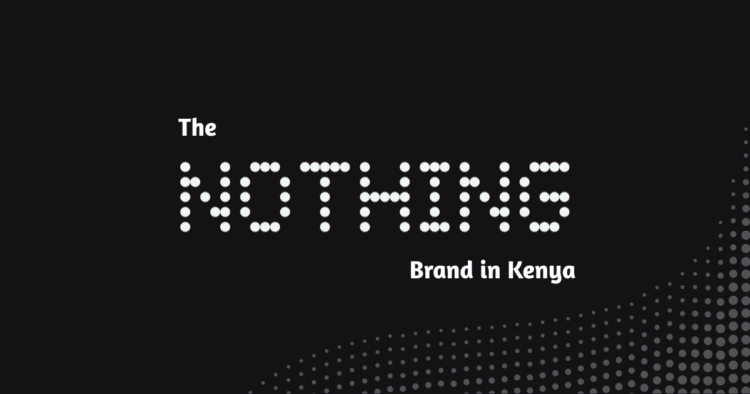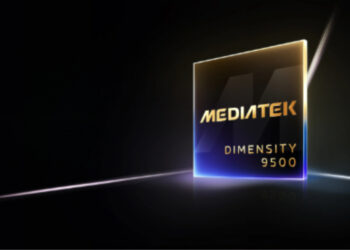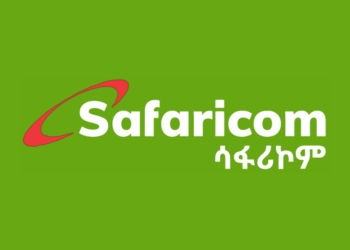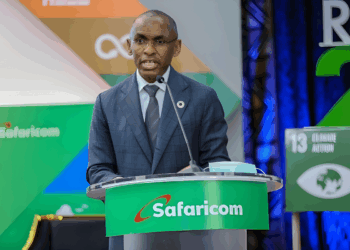The Nothing Brand in Kenya faces a defining test. Kenya is not just a market—it’s a proving ground where trust, access, and cultural fluency decide survival. Global design and minimalist storytelling won’t cut it without local relevance. This is not a product review—it’s a strategic decoding of buyer psychology, retail dynamics, and the expectations that shape tech adoption. CMF by Nothing enters as a stylish contender in Kenya’s mid-range war. But can it earn trust, establish a local presence, and adapt quickly enough to succeed in East Africa’s most competitive mobile market?
From Global Disruption to Local Expectation
Carl Pei’s Vision | Disruption by Design
Since its 2020 launch, the Nothing Brand—founded by Carl Pei, former co-founder of OnePlus—has positioned itself as a design-first disruptor in a sea of sameness. With transparent hardware, glyph lighting, and minimalist packaging, Nothing’s aesthetic philosophy challenged the status quo in Western and Asian markets. The Nothing Phone (1) and Phone (2) earned global attention for their industrial design and visual storytelling, while the 2023 launch of CMF by Nothing marked a strategic pivot: affordability, modularity, and color-led personalization.
Pei’s vision is bold—strip away complexity, elevate design, and build a brand that feels human. However, in Kenya, disruption requires more than just design. It demands trust, access, and cultural fluency.
Kenya’s Buyer Priorities | Grounded, Not Glamorous
Kenya’s mobile market is not driven by hype—it’s driven by utility, visibility, and long-term value. A smartphone here is more than a device; it’s a business tool, a status symbol, and often a multi-year investment. Buyers ask:
- Can I repair it in River Road or Karatina town?
- Are spare parts available and affordable?
- Is it stocked at trusted retailers like Phoneplace Kenya, Smart Devices, or Safaricom shops?
- Does it offer real value at KES 20K–30K, or is it just pretty packaging?
Though appreciated, design is not decisive. Repairability, resale potential, and after-sales support carry more weight than glyph lights or matte finishes. In Kenya, functionality is fashion.
The Tension | Can Global Vision Meet Local Relevance?
Nothing’s global playbook thrives on scarcity, storytelling, and aesthetic differentiation. But Kenya rewards presence, practicality, and peer validation. The tension is evident: Can a brand built on mystique and minimalism embed itself in a market that demands tangibility and trust?
CMF by Nothing enters with promise—affordable, stylish, and modular. But it’s invisible on local shelves, absent from Safaricom’s device plans, and missing from creator-led commerce on TikTok and Instagram. Without retail partnerships, service centers, or localized marketing, it risks becoming a ghost brand.
Carl Pei’s vision must evolve—not dilute—to meet Kenya’s expectations. Because here, relevance isn’t earned by design—it’s earned by showing up, staying visible, and serving the buyer’s reality.
Inside the Kenyan Buyer’s Mind
Kenya’s smartphone market is not driven by hype—it’s shaped by functionality, trust, and long-term value. With over 27 million internet users and 15 million active social media accounts as of Q1 2025, mobile devices play a central role in work, commerce, and identity. But beneath the surface lies a layered psychology—one shaped by price sensitivity, repair culture, peer influence, and ownership legacy. For brands like Nothing, decoding this mindset is not optional—it’s the difference between being relevant and being rejected.
Value vs. Vanity | The Specs-First Culture
Kenyan buyers prioritize specifications, seek value, and consider repairability. They may admire sleek design, but they choose phones based on performance, price, and practicality—not aesthetics. The coe decision matrix is rarely overriden:
- Performance: At KES 13,000–30,000, buyers expect 6GB+ RAM, 128GB storage, and 50MP+ cameras. Devices like the Tecno Spark 40 (KES 13,000*) and Camon 40 Pro (KES 32,000*) dominate this segment.
- Battery & durability: A 5200mAh battery is now baseline. With phones offering batteries of up to 6,000mAh (Samsung Galaxy M34 5G, Motorola Moto G60), customers are more aware of this feature and its benefits. Phones must survive long commutes, dusty towns, and power outages.
- Repairability: Can it be fixed in Eldoret, River Road, Ngong, or Gikomba without waiting for imported parts?The Camon 40 Series offers a 6.78-inch AMOLED display, 120Hz refresh rate, MediaTek Helio G100 Ultimate chipset, and a 50MP Sony LYT-700C Ultra Night Camera with OIS. These are not just specs—they’re survival features, dearly valued by users.
CMF by Nothing enters with style—but style alone won’t sell. Buyers ask: Can it work, last, and be fixed? In Kenya, aesthetic minimalism must meet mechanical realism. Anything less is dismissed as vanity.
Social Proof & Influence | The Peer-Led Purchase Funnel
Kenyan buyers don’t just read specs—they watch, ask, and compare. The decisions to buy are influenced by:
- TikTok demos: Creators like Roy Kanyi, TechWiz Kenya, Gadgets Africa, Moran, and Android Kenya showcase real-world usage, not scripted hype.
- WhatsApp groups: In estates, campuses, and workplaces, deals, reviews, and warnings circulate faster than brand ads.
- YouTube reviews: Local voices matter more than global influencers. Authenticity beats polish.
Nothing must activate local creators, not just global ambassadors. Visibility in these micro-networks builds trust faster than billboards. In Kenya, peer validation is the new marketing.
Ownership Culture | Phones as Assets, Not Accessories
A smartphone in Kenya is a multi-dimensional asset:
- Tool: For M-PESA, TikTok commerce, remote work, and digital learning.
- Status symbol: A visible marker of progress, taste, and hustle.
- Legacy item: Often gifted, resold, or passed down.
With flagship phones like the iPhone 17 retailing above KES 180,000, many buyers opt for refurbished or second-hand alternatives. Platforms like Jiji, PigiaMe, and Facebook Marketplace thrive on this culture of resale. Even retailers like Phoneplace Kenya and Phones Store now offer refurbished units with warranties—bridging the gap between affordability and trust.
Buyers ask: Will this phone hold value? Can I resell it in a year? Will my cousin/ girlfriend, or brother inherit it in working condition?
For Nothing, this means building devices that last, retain value, and integrate into Kenya’s ownership lifecycle. Disposable tech doesn’t sell—durable tech earns loyalty.
Kenya’s Retail Reality | From CBD Shops to Digital Flash Sales
Kenya’s mobile retail ecosystem is a hybrid battlefield—where offline trust meets online speed, and visibility is currency. As of Q3 2025, over 90% of smartphone purchases are still influenced by physical retail, with walk-in shops remaining the dominant channel. Yet digital commerce is rising fast, driven by creator-led flash sales, TikTok demos, and bundle financing. For Nothing Brand in Kenya, success depends not just on product quality, but also on retail presence, payment flexibility, and creator trust.
Offline Dominance | Earning Trust Face-to-Face
Kenyan buyers still prefer to touch, test, and talk before committing. Walk-in shops along Moi Avenue, Kenyatta Avenue, Tom Mboya Street, Malls along Thika Road such as TRM remain the heartbeat of mobile retail. Stores like Phoneplace Kenya, Smart Devices, and Gadget World offer hands-on demos, price negotiations, and instant repairs—services that online platforms can’t replicate.
- Moi Avenue alone sees over 15,000 daily walk-ins across mobile outlets, with mid-range devices accounting for nearly 60% of sales.
- Buyers ask: Is this phone real? Can I test the camera? Will I get a receipt and warranty?
- Retailers offer: face-to-face assurance, flexible payment, and after-sales support.
For Nothing, absence in these spaces means invisibility. CMF must be stocked, demonstrated, and supported in Kenya’s retail corridors—not just listed online. Presence is proof. Xiaomi is a good case study, having adopted a more hands-on selling approach for record sales and market share in 2024/25.
Financing & Bundles | Access Is the New Advantage
Affordability isn’t just about price—it’s about payment flexibility. Programs like Safaricom’s Lipa Mdogo Mdogo allow buyers to own devices from as low as KES 20/day, while Airtel’s Smart Plans bundle smartphones with monthly data and zero upfront costs.
- Lipa Mdogo Mdogo now supports devices up to KES 30,000, with repayment periods of 6–12 months based on M-PESA credit scoring.
- Airtel’s Smart Plans offer 4G phones bundled with 5GB monthly data for under KES 2,000/month, targeting students and first-time buyers.
- Telkom Kenya and Faiba are piloting similar models for mid-range devices, with flexible SIM + device packages.
CMF by Nothing must align with these realities. Without financing options, it risks being priced out of relevance. In Kenya, access beats aspiration—and telco partnerships are the gateway.
Creator Commerce — The Rise of Peer-Led Retail
Creator-led commerce is transforming Kenya’s digital retail landscape. TikTok shops, Instagram drops, and WhatsApp flash sales are now mainstream. Influencers like TechWiz Kenya, Miss Gadgets, Yes Gadgets, Roy Kanyi and Android Kenya host live demos, unboxing videos, and direct purchase links—often converting more effectively than traditional ads.
- TikTok Kenya reports over 1.2 million monthly active shoppers, with top creators averaging 15K–50K views per tech demo and conversion rates of 8–12% for mid-range devices.
- WhatsApp Business is now a retail channel, with sellers offering same-day delivery, mobile payment, and flash discounts.
Nothing must tap into this trust economy. CMF should be activated through creator-led retail ecosystems, bundled with accessories, and sold through community-led channels. In Kenya, infrastructure and creators highly define and impact influence, hence considered the new retail architects.
Retail in Kenya is not just about availability—it’s about visibility, credibility, and adaptability. Brands that show up, partner locally, and empower creators win trust. Those who stay distant, rigid, or invisible get filtered out.
CMF by Nothing — Affordable, Stylish, but Invisible
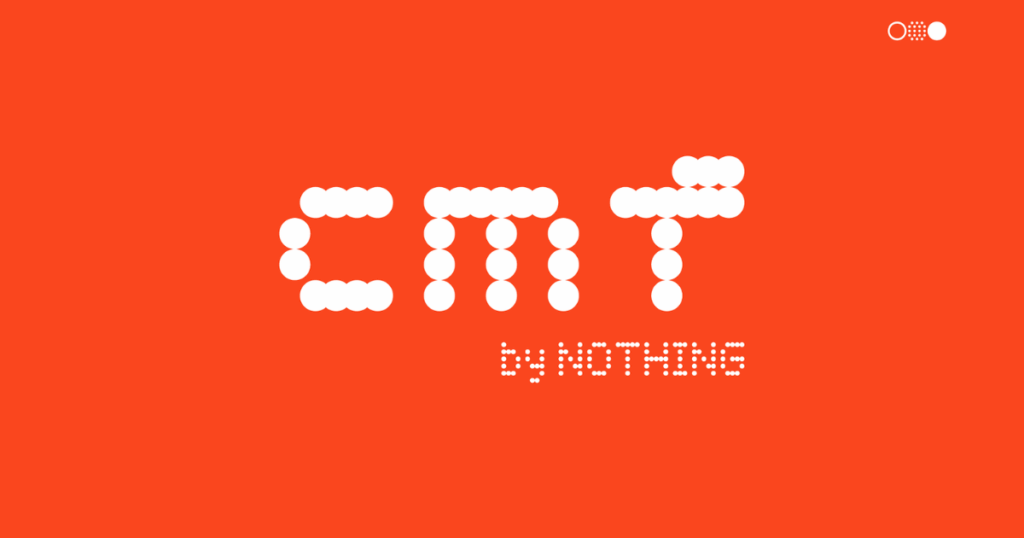
Launched to democratize premium design, CMF by Nothing offers modular and stylish tech for budget-conscious buyers. As of 2025, the product line includes:
- CMF Phone 1 (2024): 6.67-inch AMOLED, MediaTek Dimensity 7300, 50MP dual camera, 5000mAh battery, 33W fast charging, Android 14.
- CMF Phone 2 Pro (2025): 6.77-inch AMOLED, Dimensity 7300 Pro, 50MP quad camera with telephoto lens, IP54 rating, 5000mAh battery, Android 15.
- CMF Buds 2 / Buds Pro / Buds 2a: Affordable ANC earbuds with Nothing’s signature design language and up to 43dB noise cancellation.
- CMF Watch Pro / Watch 2: AMOLED displays, health tracking, Bluetooth calling, and modular strap options.
With pricing between KES 20,000 and KES 30,000, CMF phones offer segment-leading specs, including AMOLED screens, 8GB RAM, 128–256GB storage, and advanced camera systems. These features rival those of the Tecno Camon 40 Pro, Redmi Note 14, and Samsung Galaxy A15—yet CMF remains largely invisible in Kenya’s retail ecosystem.
- No listings on Safaricom’s device portal, Jumia, Kilimall
- No presence in Lipa Mdogo Mdogo, Airtel bundles, or TikTok creator drops.
- No local repair ecosystem, accessories, or warranty support.
This is a strategic blind spot. CMF has the specs, style, and pricing to win Kenya’s mid-range buyer—but without retail presence, telco integration, or creator activation, it risks becoming a ghost brand.
Kenyan buyers don’t just want good phones—they want accessible, repairable, and visible phones. CMF could be Nothing’s entry point into East Africa’s mobile war. But unless it shows up—physically, digitally, and socially—it will remain unseen, untrusted, and unbought.
The Window Is Narrow — But Not Closed
Kenya’s mobile market doesn’t reward aesthetics—it rewards execution, access, and trust. CMF by Nothing has the specs, the style, and the price point to compete. But specs don’t sell themselves. Visibility, support, and cultural fluency do. The opportunity is real—but shrinking. The question is no longer “Is CMF good enough?” It’s “Can Nothing move fast enough?”
What Global Brands Must Learn
Success in Kenya demands more than global hype. It demands local immersion:
- Service centers in Nairobi, Kisumu, and Mombasa.
- Spare parts stocked in River Road and Ngong.
- Creator partnerships with TikTok tech reviewers and WhatsApp sellers.
- Telco bundles with Safaricom and Airtel.
- Warranty-backed trust and repair ecosystems.
Design is not a differentiator—it’s a baseline. Trust is the currency. Access is the advantage.
Oraimo vs. Xiaomi vs. CMF
Oraimo won through saturation—every kiosk, every influencer, every bundle. Xiaomi earned loyalty through consistent specs, local partnerships, and repair support. CMF has the specs—but lacks presence, financing, and creator-led visibility.
CMF is the challenger. However, challengers must learn quickly, embed themselves deeply, and execute relentlessly. Otherwise, they’re forgotten.
Final Thought
Kenya rewards brands that show up—not just stand out. CMF’s future here won’t be shaped by design—it will be shaped by distribution, support, and strategic humility. The specs are ready. The market is open. But the clock is ticking.
This is not a product review. It’s a strategic decoding. And for Nothing, the verdict is clear: adapt or misfire.
Conclusion | The Nothing Brand in Kenya
The Nothing Brand in Kenya shows great potential. But truth be told, Kenya’s tech market doesn’t reward potential—it rewards presence, precision, and proof. CMF by Nothing, a budget-friendly sub-brand of Nothing, has the specs to compete, but specs alone don’t sell. Execution does. For many global brands eyeing East Africa, this is the blueprint: embed, adapt, and earn trust. JuaTech Africa will continue to decode the market—so buyers win, and brands learn.
Previous: Read Part 1 → The Nothing Phone Deep Dive: Global Vision vs. Kenyan Reality. It unpacks Nothing’s global ambition, Carl Pei’s design-led philosophy, and the tension between aesthetic minimalism and Kenya’s functionality-first market. It laid the foundation for understanding why relevance in Kenya demands more than branding—it demands strategic adaptation.
NEXT: Read Part 3 → Can CMF Deliver? Oraimo vs. Xiaomi vs. Nothing in Kenya’s Mid-Range War.


